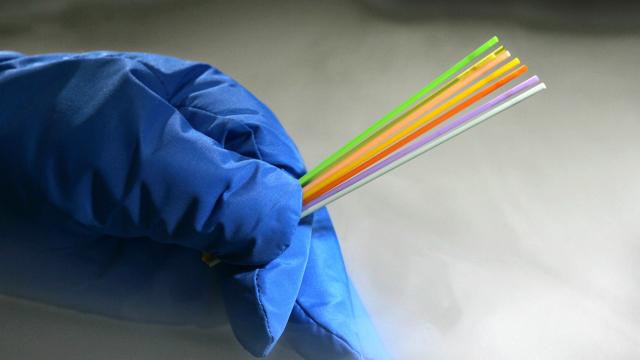Wrap your head around this one: On November 25, 2017 a healthy baby girl was born to a 26-year-old mother in Tennessee – but the embryo that would later result in the baby was conceived and cryogenically frozen in 1992. It’s now considered the oldest known frozen embryo to result in a successful birth.
As CNN reports, the couple, Tina and Benjamin Gibson of Tennessee, were not able to have biological children of their own, so they opted to have a “snowbaby” – a baby born from an embryo stored in a vat of liquid nitrogen. This form of assisted reproduction is not rare (scientists have been doing this since 1984), but using a 24-year-old frozen embryo most certainly is. Prior to this,
MIRACLE BABY: Emma Wren was born after being frozen for more than 24 years as an embryo. Her mother says she’s a miracle and will have quite the story to tell someday. @wbir READ: https://t.co/iSAw1Yk1jQ pic.twitter.com/k6TFCqLJNg — Madison Wade (@madisoncwade) December 19, 2017 Emma was delivered last month in Tennessee by Jeffrey Keenan, medical director of the National Embryo Donation Center. The embryo was originally frozen on October 12, 1992 by anonymous parents undergoing in vitro fertilization. Sometimes during IVF, extraneous embryos are discarded (about 15% to 20% of IVF cases result in embryos that aren’t used), but some couples opt for cryogenic storage. In this case, the preservation was handled by the faith-based National Embryo Donation Center, which works “to protect the sanctity and dignity of the human embryo.” As this case demonstrates, embryos can remain frozen for an extended period of time and eventually be transferred to a woman hoping to conceive. After Tina passed a medical exam and the couple met domestic requirements (a social worker interviewed the couple to make sure they’d be good parents, though the Gibsons have already been foster parents to a couple of kids), the prospective parents chose an embryo by viewing some 300 donor profiles. These profiles contain basic genetic information about the biological parents. Tina and Benjamin chose an embryo based on its physical characteristics (the couple describe themselves as being physically small, and they wanted a child to match) and the biological parents’ medical history. The couple’s first pick wasn’t viable, which isn’t surprising given that one in four embryos don’t survive the thawing process. The couple’s second choice was used, and it turned out to be a world record in terms of viability after cold storage. It’s important to point out that this is the oldest known frozen embryo to result in a successful birth. It’s entirely possible that older embryos have been used; as New Hope Fertility Center doctor Zaher Merhi explained to CNN, U.S. companies aren’t required to record the age of the embryo used, just the outcome of the pregnancy. Interestingly, the baby girl’s biological parents preserved a total of three embryos, so an opportunity exists for Emma to have biological brothers and sisters. “[After] having natural childbirth, I’m like, ‘I’m never doing that again!’” Tina told CNN. “But I’m sure in like a year, I’ll be like, ‘I want to try for another baby.’” [CNN]
